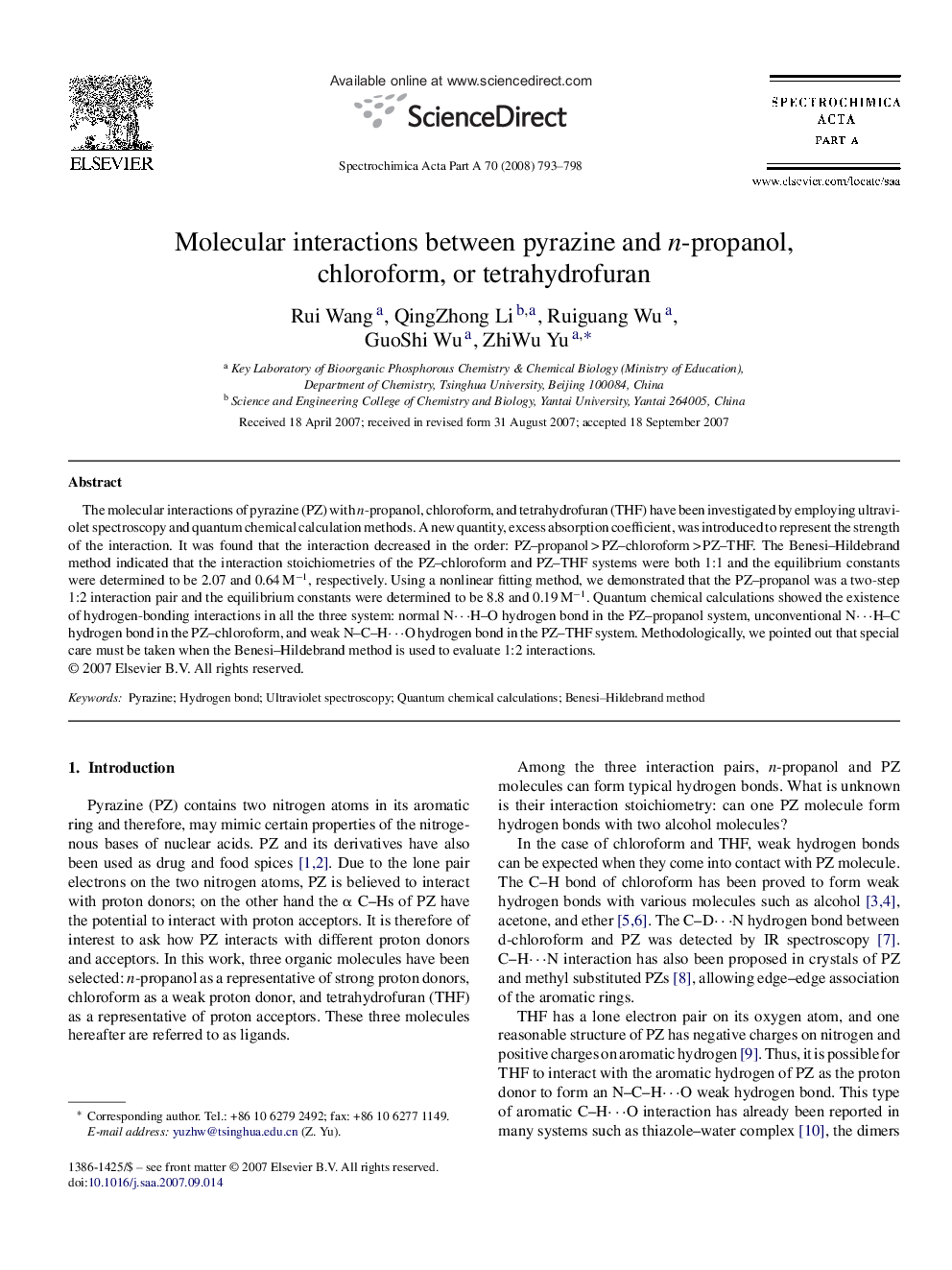| Article ID | Journal | Published Year | Pages | File Type |
|---|---|---|---|---|
| 1234145 | Spectrochimica Acta Part A: Molecular and Biomolecular Spectroscopy | 2008 | 6 Pages |
Abstract
The molecular interactions of pyrazine (PZ) with n-propanol, chloroform, and tetrahydrofuran (THF) have been investigated by employing ultraviolet spectroscopy and quantum chemical calculation methods. A new quantity, excess absorption coefficient, was introduced to represent the strength of the interaction. It was found that the interaction decreased in the order: PZ-propanol > PZ-chloroform > PZ-THF. The Benesi-Hildebrand method indicated that the interaction stoichiometries of the PZ-chloroform and PZ-THF systems were both 1:1 and the equilibrium constants were determined to be 2.07 and 0.64 Mâ1, respectively. Using a nonlinear fitting method, we demonstrated that the PZ-propanol was a two-step 1:2 interaction pair and the equilibrium constants were determined to be 8.8 and 0.19 Mâ1. Quantum chemical calculations showed the existence of hydrogen-bonding interactions in all the three system: normal Nâ¯H-O hydrogen bond in the PZ-propanol system, unconventional Nâ¯H-C hydrogen bond in the PZ-chloroform, and weak N-C-Hâ¯O hydrogen bond in the PZ-THF system. Methodologically, we pointed out that special care must be taken when the Benesi-Hildebrand method is used to evaluate 1:2 interactions.
Related Topics
Physical Sciences and Engineering
Chemistry
Analytical Chemistry
Authors
Rui Wang, QingZhong Li, Ruiguang Wu, GuoShi Wu, ZhiWu Yu,
